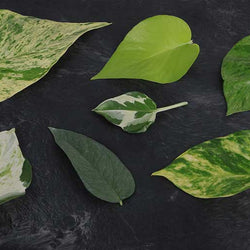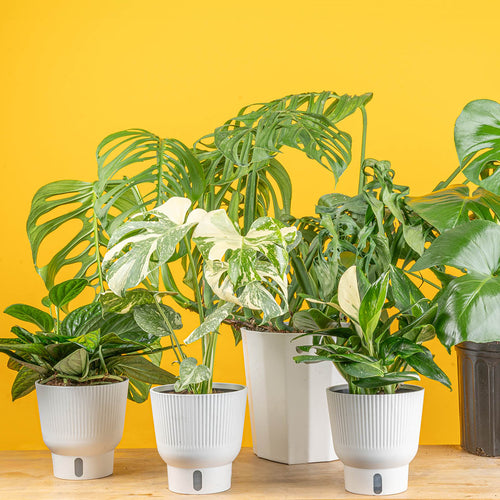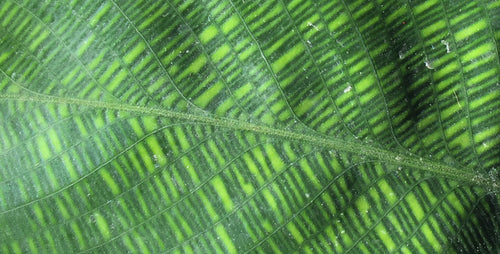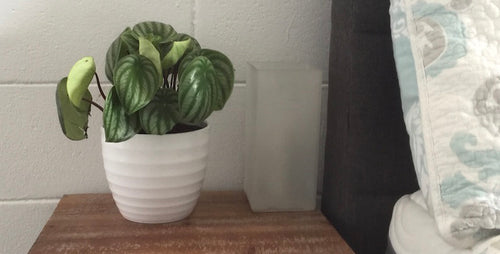Keeping a houseplant healthy and happy is easy—even if you’ve never raised a plant before. The needs of plants are so simple: when you offer the right amount of light, water, and food, you can’t go wrong. Here are the THREE things you need to know about to keep your indoor plants in top form.
 1. LIGHT
1. LIGHT
All plants need light, but the amount varies, in part, by where the plant originally came from. For example, houseplants that are natives of the jungle floor have evolved to thrive on the filtered light that sifts through the dense jungle canopy. Desert plants, on the other hand, are sun-worshippers because there is little shade in their world. Plants such as Succulents and Cacti grew to be bathed in direct sunlight all day long, so they are engineered to tolerate shady conditions. To be successful, match the light conditions in your home to the plants that will thrive there. Unobstructed, south-facing windows are ideal for desert dwellers, but light-sensitive Ferns, Philodendrons, and some Orchids may develop scorched leaves in bright light. East- and west-facing windows generally receive partial sun and work well for plants such as Dieffenbachia, Dracaena, and Ficus. Dimmer locations that face north are best for low-light-tolerant plants such as Snake Plant, English Ivy, Cast Iron Plant, and Ferns.
Of course, you can modify the light a plant receives by adding shear curtains to reduce sunlight or adding fluorescent or LED lights to boost the light levels, especially during winter when there are fewer hours of daylight and more overcast days.
The plant tag will tell you how much light a plant needs. Here’s how to tell if a plant is getting too much or too little light.
Too Little Light
- The plant dramatically starts to lean towards the light.
- Lower and/or interior leaves on the plants simply fall off.
- Leaves curl upwards.
- New growth is much smaller than original leaves and may have less color.
- Plants grow spindly with elongated stems.
- Flowering plants stop producing blooms.
Too Much Light
- The plant develops brown or sunburned spots on its leaves.
- Leaves begin to yellow and fall.
- Plants with colorful foliage will begin to fade.
- The entire plant looks scorched.
 2. WATER
2. WATER
Watering indoor plants isn’t rocket science, but there are a few tips we suggest you keep in mind. First, water whenever the soil feels dry to the touch. Apply lukewarm water until it runs out of the drain holes of the pot (be sure to use a drip tray to protect furniture). Then, allow the soil to dry before you water again. Overwatering is probably the number one cause of early houseplant death. Here’s how to tell if your plant is suffering from too much or too little moisture.
Signs of too much water
- Stems rot where they touch the soil.
- Fungus grows on the soil surface.
- Water stands in the drip tray.
- Young and old leaves fall off at the same time.
Signs of too little water
- Leaves and stems wilt and shrivel.
- Lower leaves curl and yellow.
- Some leaves become translucent.
- Flowers or leaves drop prematurely.
3. FERTILIZER
Lucky for you, most of our houseplants are potted in a mix that contains slow-release fertilizer. This means that you won’t have to add more nutrients to the soil right away. Over time, however, you might want to fertilize your houseplants in one of two ways. You can sprinkle a dry, slow-release houseplant fertilizer --- like we do --- over the surface of the soil. Or you can add a dilute solution of liquid houseplant fertilizer when you water. Liquid fertilizers can be absorbed faster than dry fertilizers and are especially useful for flowering houseplants such as African Violet, Anthurium, and Peace Lily. Slow-release fertilizer, on the other hand, feeds the plant over several months. Plus, you won’t have to worry about mixing and measuring fertilizer.
Learn how to repot your houseplants
Make your home more comfy with houseplants
















